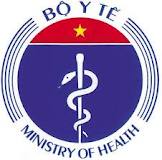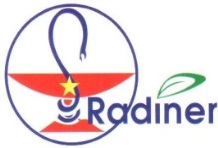EFFECTS OF KACIMEX
EXPERIMENTAL LIVER CANCER IN WHITE Mice AND EFFECTS OF DRUG ON THE IMMUNE SYSTEM OF TUM CARRYING Mice
Prof.Huangren Bin.PhD *; Dr Nguyen Phu Kieu PhD ** Prof. PhamKim Man,PhD**
*Institute of Clinical Pharmacology - Naning Medical University - China.
** Vietnam Institute for Research and Treatment of Serious Diseases.
I. MATERIALS AND METHODS
1. Materials
1.1. Experimental drugs and chemicals:
- Kacimex, a drug produced by Que Lam Company Limited, Vietnam Institute for Research and Treatment of Serious Diseases.
- Cyclophosphamide, drug produced by Heng Thuy Company, Jiangsu, number 06041521
- 5-fluorouracil
- Di methylthiazole, product of Sigma Company, USA
- Environment RPMI-1640 (Roswell Park Memorial Institute), a product produced by Hyclone Company
- Fresh calf serum, produced by Tu Quy Thanh Company, Hangzhou
1.2. Devices:
- Automatic ELISA reader, Microfluid mixing device, Inverted phase contrast microscope.
- CO2 incubator
- Super clean culture chamber
- Deep refrigerator
1.3. Experimental animals
- White mice, average weight 18-22g, half male and female, provided by the experimental animal breeding center, Guangxi University of Medicine. Approval number: Que SCXK-2003.
- Mouse liver cancer cell line H22, 3 human tumor cell lines 7404, SGC-7901, HEPG2 are stored by the Institute of Pharmacy, Guangxi University of Medicine.
2. Method
Use the MTT colorimetric method with Di methylthiazole to determine the inhibitory effect of Kacimex on cell proliferation.
Use peptidase to treat 3 human tumor cell lines 7404, SGC-7901, HEPG2 while growing at multiplicity, then use RPMI-1640 medium adding 10% fresh fetal bovine serum to prepare a suspension. cells with a concentration of 107 cells/ml, put into a 96-hole plastic culture plate, each hole is 190 µl, incubated in a culture chamber of 5% CO2, 37oC, 95% humidity for 8 hours. Design the template into:
- Comparison group: only add 5-fluorouracil
- Control group: only add RPMI-1640 medium
- Experimental group: differentiate between adding different concentrations of 5-fluorouracil and Kacimex medicine
Culture for 48 hours, add 10µl Thiazole green (5g/L), continue culturing for another 4 hours under the same conditions above, quickly turn the plastic culture plate upside down to remove the culture solution in the holes, each hole, add 150µl DMSO (Dimethyl sulfoxide), gently shake with a shaker for about 10 minutes in the dark at room temperature to completely dissolve the precipitate, use an automatic ELISA reader with a wavelength of 570-630nmnddeer to measure the OD value of composition in the pores, calculate the inhibition ratio.
Inhibition rate (%) = (1 – OD value of experimental group/OD value of comparison group) x 100
Calculate the IC50 number (Inhibitory concentration 50%)
3. Experiments on animals
3.1. Effect of Kacimex on experimental liver carcinogenesis (H22) in mice
3.1.1. Establishing a tumor-bearing mouse model
- Select 50 white mice, average weight 18-22g, half of each type male and female,
- With aseptic technique, using the acclimatization method in cancer, aspirating peritoneal fluid from liver cancer mice (H22) grown for 7 days, using physiological saline to mix into a cell suspension reaching a concentration of 3x107 cells. cells/ml.
- Use this cell suspension to inject subcutaneously into the armpit area of experimental mice, injecting 0.2ml per animal.
- The next day, weigh the mouse's weight, kill the mouse, dissect the tumor, and weigh the tumor.
- Calculate the tumor growth inhibition rate according to the formula: Inhibition rate = (1 – average tumor weight in the experimental mouse group/average tumor weight in the control mouse group) x 100
3.1.2. Grouping and giving medication
- After being inoculated with H22 cancer cells above, mice were randomly divided into 5 groups after 24 hours: model group, Cyclophosphamide group, Kacimex group (high dose, medium dose and low dose).
- Model group: inject 0.4ml of warmed distilled water into the stomach, once a day, continuously for 10 days.
- The group used 0.2ml intraperitoneal injection of Cyclophosphamide to get a dose of 20mg/kg mouse body weight, once a day continuously for 10 days.
- Kacimex group (high dose, medium dose and low dose): gastric pump 0.4ml of Kacimex drug prepared into a differentiated solution reaching 40, 30, 15mg/ml according to different dose groups continuously for 10 days .
3.1.3. Determine the tumor inhibition rate of Kacimex in experimental animals
24 hours after the last drug administration, kill the mouse, dissect the tumor, and weigh the tumor.
Calculate the tumor inhibition rate according to the formula: Inhibition rate = (Average tumor weight in the model mouse group - Average tumor weight in the drug-treated mice group)/Average tumor weight in the group of model mice x 100
3.2. Effect of Kacimex drug on prolonging survival time of white mice with liver cancer line H22
3.2.1. Establishing a mouse model of H22 liver cancer with peritoneal effusion
- Select 50 white mice, average weight 18-22g, half of each type male and female,
- With aseptic technique, using the acclimatization method in cancer, aspirating peritoneal fluid from liver cancer mice (H22) grown for 7 days, using physiological saline to mix into a cell suspension reaching a concentration of 2x107 cells. cells/ml.
- Use this cell suspension to inject into the peritoneal cavity of experimental mice, injecting 0.2ml per animal.
3.2.2. Grouping and giving medication
- After being implanted with the above H22 cancer cell lines, mice were randomly divided into 5 groups: model group, Cyclophosphamide group, Kacimex group (high dose, medium dose and low dose).
- Model group: inject 0.4ml of distilled water into the stomach, once a day, continuously for 10 days.
- The group used Cyclophosphamide injected subcutaneously with 0.2ml to get a dose of 20mg/kg of mouse body weight, once a day continuously for 10 days.
- Kacimex group (high dose, medium dose and low dose): gastric pump 0.4ml of Kacimex drug prepared into a differentiated solution reaching 40, 30, 15mg/ml according to different dose groups continuously for 10 days .
3.2.3. Observe the effects of Kacimex on the survival time of laboratory mice
After continuously giving the drug for 10 days, stop taking the drug and monitor the survival time of the experimental mice. Calculate the survival rate of experimental mice according to the following formula:
Rate of survival prolongation (%) = (Average number of survival days of the drug groups/average number of days of survival of the control group – 1) x 100%
RESULT
1. Results of in vivo experiments
Table 1. The inhibitory effect of Kacimex on cell proliferation is very clear and better than the comparison group.
Table 2. Inhibition effect of Kacimex on cell proliferation in people with liver cancer: Kacimex acts on HEPG2 cells in people with liver cancer within 48 hours, inhibiting the growth of HFPG2 cells not obvious.
Table 3. Effect of inhibiting cell proliferation of SGC - 7901 cells on people with stomach cancer.
Kacimex acts on SGC - 7901 cells in human gastric cancer within 48 hours, has the ability to inhibit cells quite clearly, and shows a dose-dependent relationship.
2. Results of in vivo experiments
Table 1. Effects of Kacimex during life on mice with abdominal cancer with water distention
Through the concentrations of the Kacimex group on the survival period of tumor mice, there was no obvious effect.
Table 2. Effect of Kacimex on tumor inhibition rate in mice
The weight of the Kacimex groups after treating tumor mice all increased to different degrees, but the Kacimex treatment group with a low dose made the weight gain significantly higher than the Cyclophosphamide group.
CONCLUDE:
+ From experimental research results, it shows that:
1.Kacimex of the Vietnam Institute for Research and Treatment of Serious Diseases is produced from a number of herbs that help prevent and treat cancer at the cellular level.
2. Compared to the control group, Kacimex has the effect of inhibiting cell proliferation in experimental models. Thus, Kacimex has a good effect in treating liver cancer, stomach cancer and has the ability to prolong the life of people with the above dangerous diseases.
3. The difference between Kacimex and the control group is that in addition to the tumor treatment effect, there is no difference, Kacimex is non-toxic, does not cause unfavorable side effects, and also helps the body restore health.
EFFECTS OF KACIMEX IN TREATMENT OF LIVER CANCER IN LEAKED Mice AND EFFECT ON IMMUNE FUNCTION IN Mice
AT NANING INSTITUTE OF CLINICAL PHARMACOLOGY - GUANGXI CHINA
1 Materials
1.1. Drugs used in experiments
Kacimex medicine: Manufactured by the Institute for Research and Treatment of Serious Diseases
Cyclophosphamide; Hang Thuy Jiangsu lot number: 06041521
5-Fluorouracil
1. 2 Animals and tumors
SPF level, body weight 18~ 22g, half the number of male mice and female mice, provided by Guangxi Medical University Animal Experiment Center, valid license number: SCXK 2003-0003. White mouse liver cancer H22 cell block, 7404 cell block, SGC-7901 cell block, HEPG2 cell block are all kept by the pharmacology laboratory of Guangxi Medical University.
1. 3 Reagents and apparatus
MTI:product of American Sigma company; RP MI - 1640 (Hyclone Company)
Newborn bovine serum (Hangzhou Tu Quy Thanh Company)
Fully automatic enzyme tracer (Thermo Electron Corporation) microdisplacement machine (Biohit); Multi-function inverted microscope (XD-101)
CO2 tank (Thermo Forma Direct Heat CO2 Incubato)
Super clean desk (SW-CJ -1B)
Super low temperature refrigerator (MDF-382E)
2 Determine the drug's inhibitory effect on cell proliferation by comparing the MTT chromatography spectrum
Call cell block 7404 as an argument during the growth period, SGC-7901, HEPG2 tumor cells with 3 distinct human types using Pancreatin for digestion, using RPMI-1640 culture solution containing 10% heat to kill. Fetal bovine serum bacteria, prepared to a cell density of 1X107 cells/ml of single cells, injected into a culture board with 96 holes, each hole is 1901, add 5% CO2, relative humidity is 95%, in CO2 tanks are usually cultured for 8 hours at a temperature of 37℃, assuming that it is the comparison group (only adding 5-Fu, no drugs). Culture within 48 hours, add 10 1MTT (5g/L), with the same conditions continuously culture after 4 hours, quickly turn over the culture board and remove the culture solution in the holes, add 150 1DMSO to each hole. , at laboratory temperature, placed on a micro-oscillator, avoiding light and oscillating for 10 minutes, allowing the crystals to completely dissolve, using a fully automatic enzyme combined with an immunoassay meter. with a wavelength of 570 nm, with the reference wavelength being 630 nm, measure the OD value (optical absorption) of the holes and from there calculate the inhibition ratio.
[inhibition ratio(%) =(1-experimental group OD value /comparison group OD value )X100%]calculate IC50. See table 1 for results
3. In vivo experiments
3. 1 Vietnam's Kacemex drug has an effect on liver cancer (H22) tumors in white mice.
3. 1. 1 Building a mouse tumor model
Take clean, healthy white mice with a body weight of 20 ± 2g, 50 mice, half male and female, based on the tumor transplantation research method, with the condition that it has been sterilized. Take the water from the abdomen of the infected mouse. Liver cancer (H22) grew after 7 days, use dilute sodium chloride to make the cell number reach 3x107 cells/ml, inject 0.2ml/mouse into the armpit of white mice.
The next day, the body weight was measured. After killing the mouse, peel off the tumor and weigh the tumor.
The tumor growth inhibition rate was calculated according to the following formula:
Tumor inhibition rate (%) = (1 – average tumor weight of experimental group and average tumor weight of comparison group)
3. 1. 2 P grouping and giving medication
Take mice 24 hours after being injected with H22 cells and divide them into 5 groups, model group, Cyclophosphamide group, high dose Vietnamese drug group, medium dose Vietnamese drug group and low dose Vietnamese drug group, (inject NS 0.2ml into Right armpit of the mouse. Model group injected 0.4 ml of distilled water into the stomach, once a day; Cyclophosphamide group injected 20 mg/kg, injected into the abdominal cavity, once a day; Vietnamese medicine group with high dosage , medium and low are 45, 30, 15 mg/ml respectively, put 0.4 ml into the stomach, once a day, give medicine continuously for 10 days.
3. 1. 3 Measuring the tumor inhibition rate in the body of Vietnamese drugs
The last time the drug was given, 24 hours later, killing the mice, removing the tumor, weighing the tumor and calculating the tumor inhibition rate.
Tumor inhibition rate (%) = (model group tumor weight - treatment group tumor weight)/ model group tumor weight x 100%
3. 2 Effects of Vietnamese medicine on prolonging survival time in rats with bloated abdomen (H22) with liver cancer
3. 2. 1 Building a model of abdominal distension (H22) in mice
Take clean, healthy baby mice with a body weight of 20 ± 2g, 50 mice, half the number of male mice and female mice, based on the method of tumor transplantation, provided that the bloated abdomen has been sterilized ( H22) mouse liver cancer grew after 7 days, use dilute sodium chloride to make the cell number reach 2x 107 cells/ml, inject into the abdominal cavity of the mice, 0.2ml/mouse.
3. 2. 2 P grouping and giving medicine
Take the injected pups the next day and divide them into 5 groups, model group, Cyclophosphamide group, high, medium and low dose Vietnamese medicine groups. The model group put 0.4 ml of distilled water into the stomach, once a day; Cyclophosphamide group added Cyclophosphamide 20mg/kg, injected into the skin, once a day; Vietnamese medicine groups with high, medium and low dosages distinguished for Vietnamese medicines are 45, 30, 15 mg/ml respectively, put into the stomach 0.4 ml, once a day.
3.2.3 Effect on survival time of water-bellied mice (H22) with liver cancer
Give the drug continuously for 10 days, after stopping the drug, observe the survival time of the mice. The longevity rate is calculated according to the following formula:
Lifespan prolongation rate (%) = (average number of days survived in the drug group/average number of days survived in the comparison group - 1) x100%.
4 Results
4. 1 Results of out-of-body experiments
4. 1.1 Inhibitory effect of Kacimex drug on the growth of human liver cancer 7404 cells: Kacimex drug acts on human liver cancer 7404 cells within 48 hours, it has the ability to inhibit birth clearly, at the same time it also depends on the dose of the drug. See table 1 for results.
4. 1. 2 Kacimex has an inhibitory effect on the growth of human liver cancer HEPG2 cells, Kacimex has an inhibitory effect on human liver cancer HEPG2 cells within 48 hours, and inhibits the proliferation of HEPG2 cells not obvious. See table 2 for results
4. 1. 3 Kacimex inhibits cell growth in human gastric cancer SGD-7901 cells
Kacimex acts on human gastric cancer SGC-7901 cells within 48 hours, has the ability to inhibit its growth quite clearly, and also shows a dose-dependent relationship of the drug. See table 3 for results.
4. 2 Results of in vivo experiments
4.2.1 Effect of Kacimex on the survival period in rats with bloated abdominal cancer. Kacimex concentration groups on the survival period in rats with bloated abdomen had unclear prolonged effects.
4. 2.2 Effect of Kacimex on tumor inhibition rate in mice with tumors
Kacimex treated groups of mice with tumors with different levels of body weight increased, but Kacimex in the low dose treatment group, the mice's body weight increased by a clearly high amount, even higher. the entire Cyclophosphamide group. Kacimex treating groups of mice with tumors had a certain inhibitory effect, but the tumor inhibition rate was not as clear as Cyclophosphamide (See table 5 for results).







